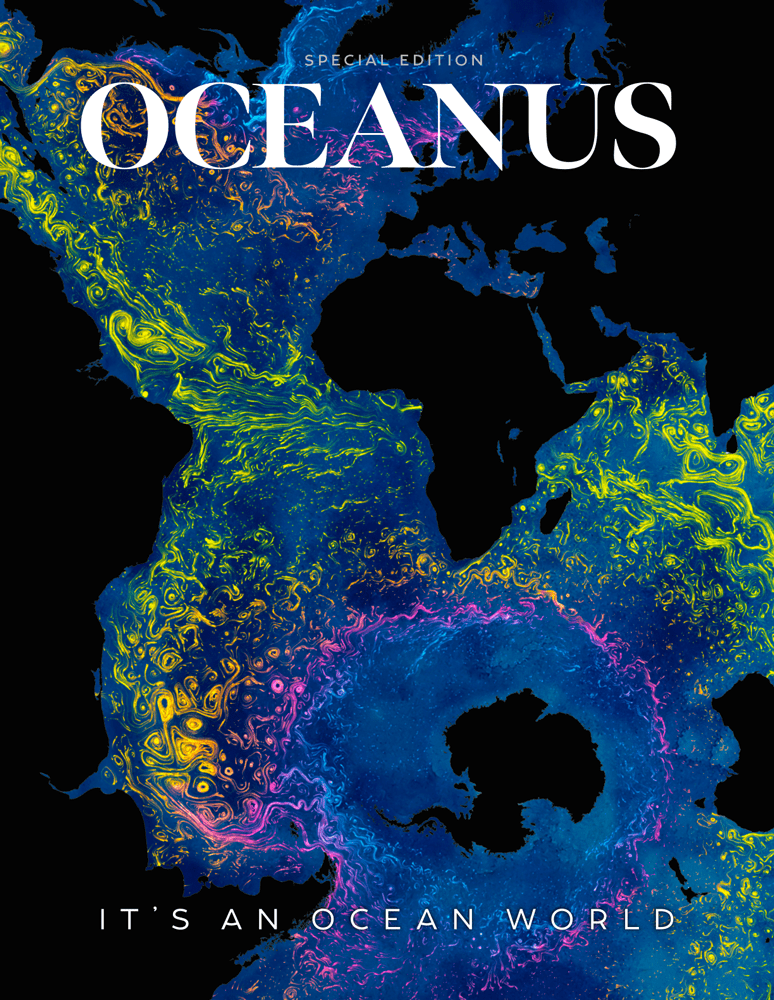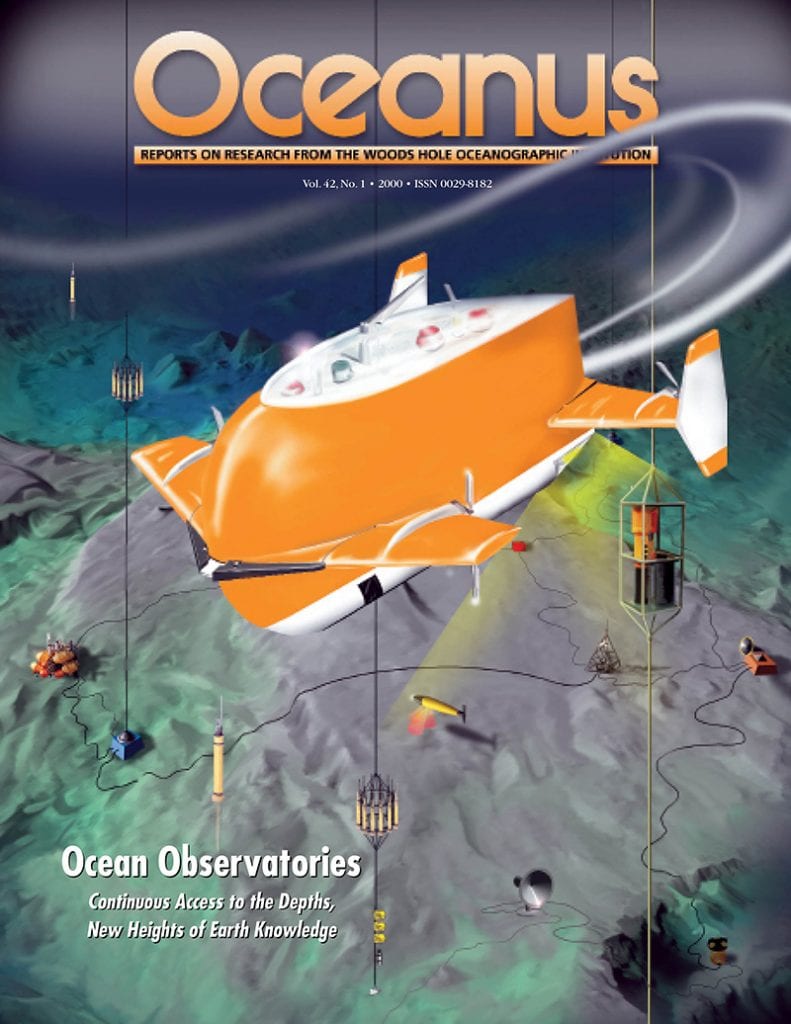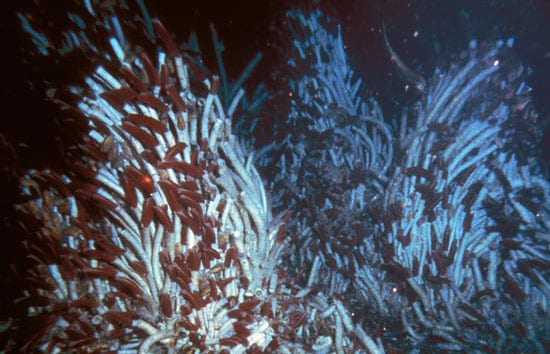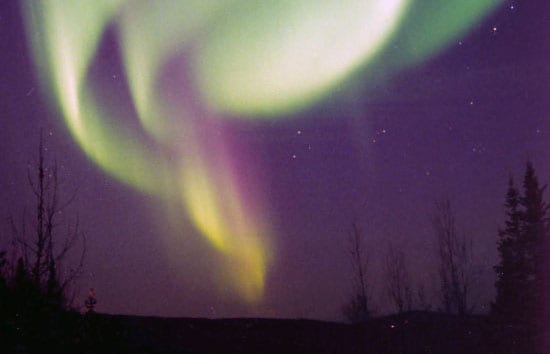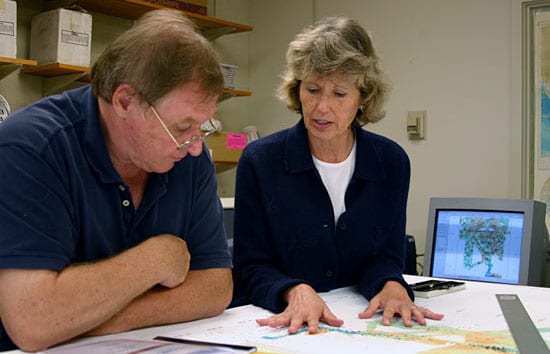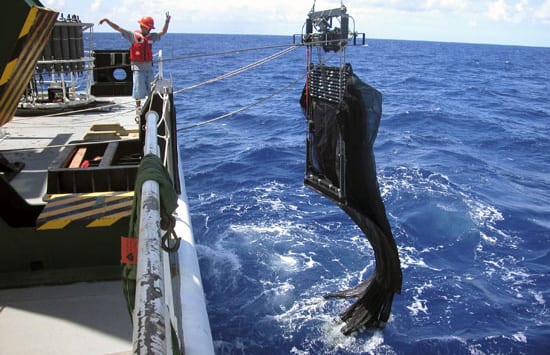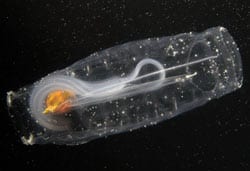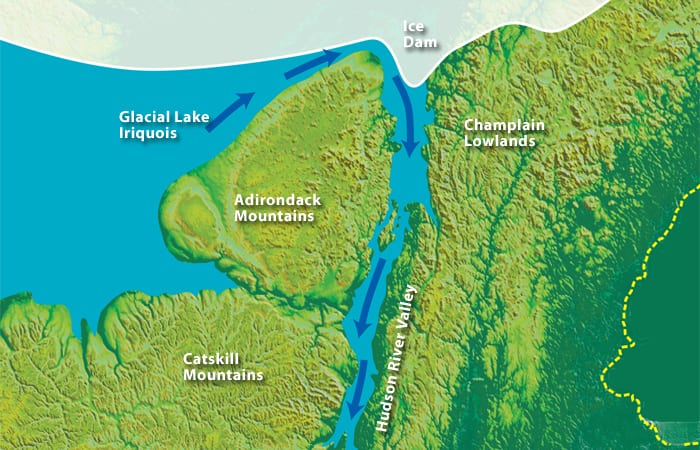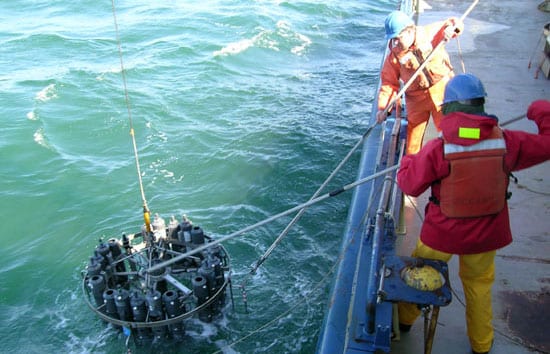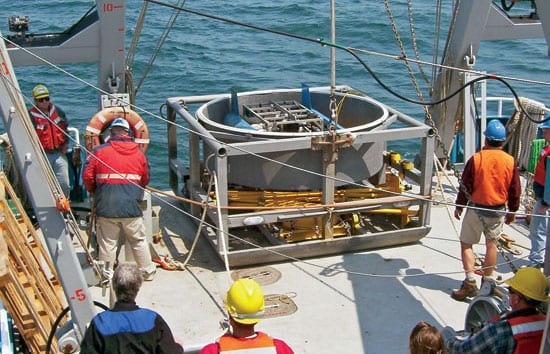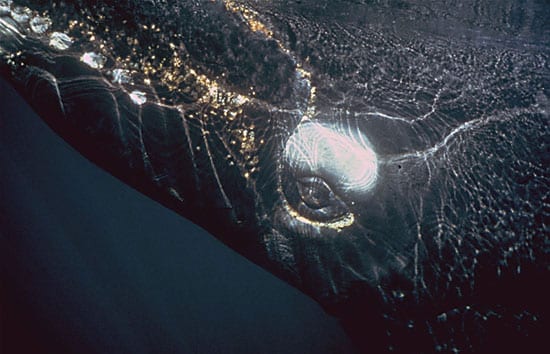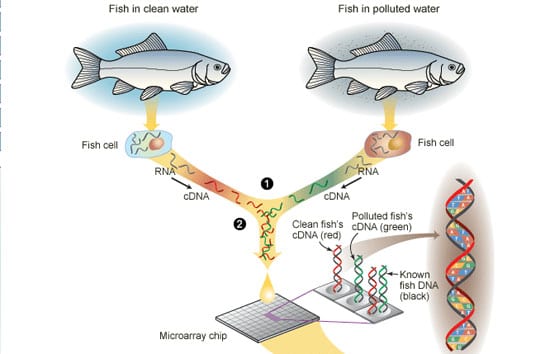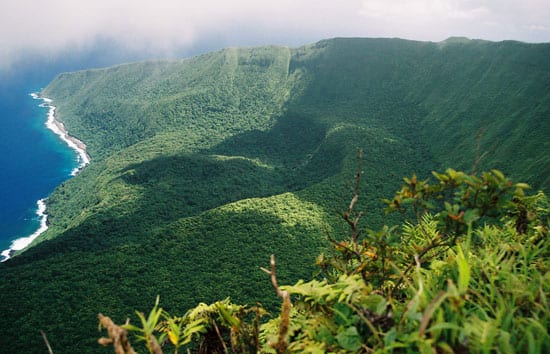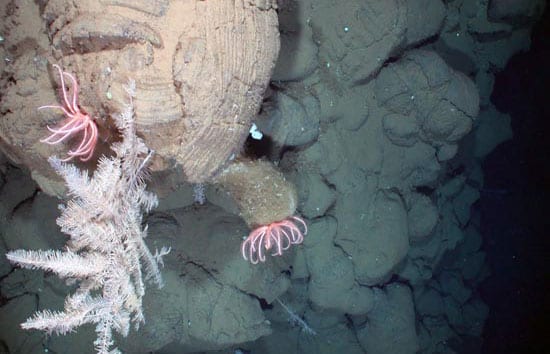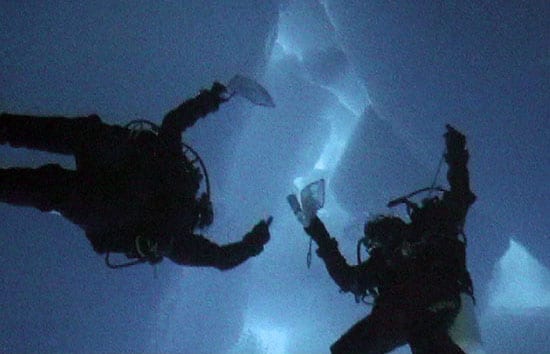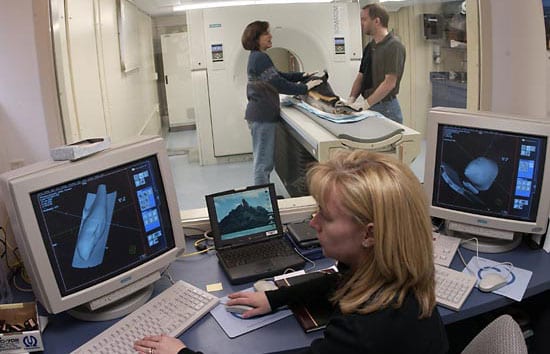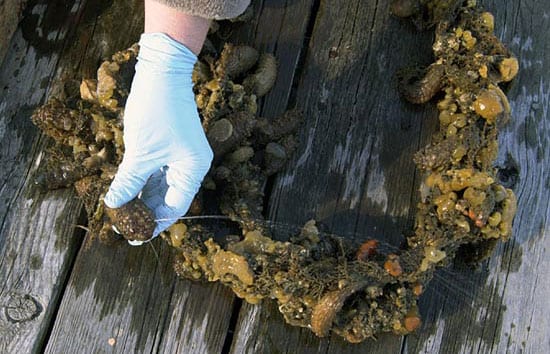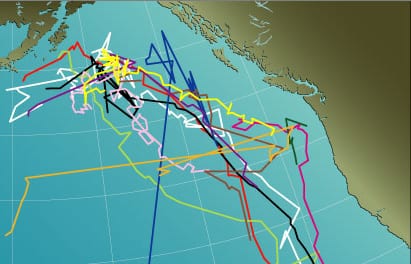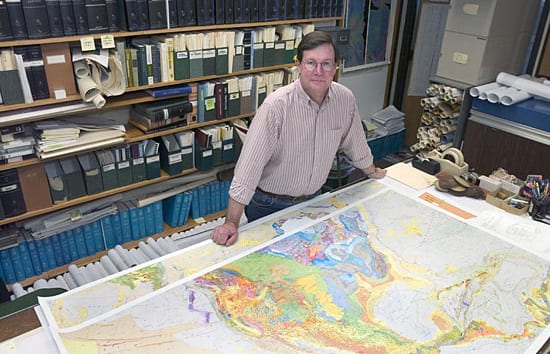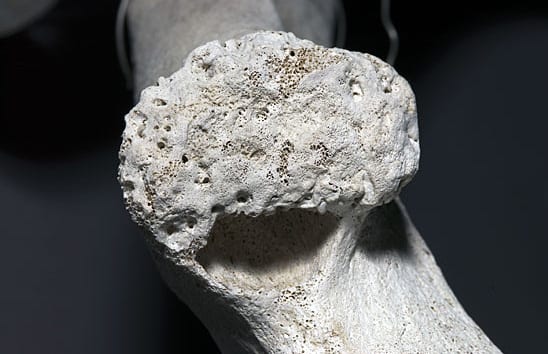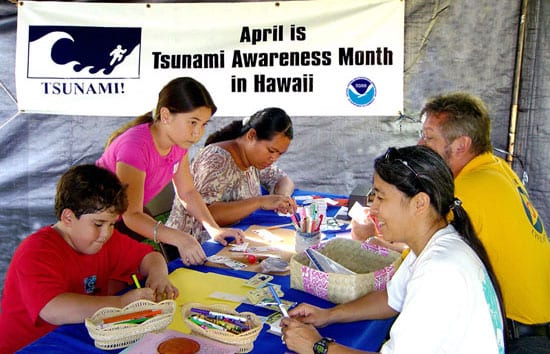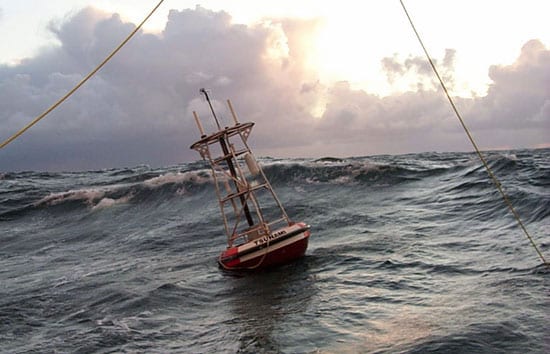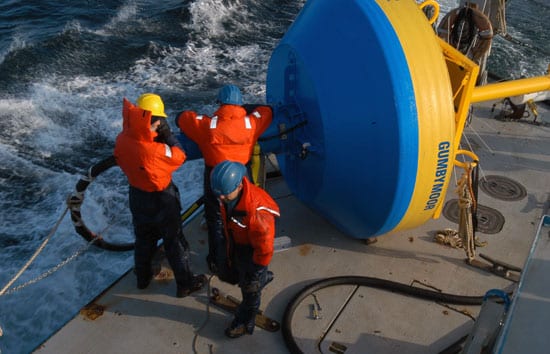Oceanus Online Archive
On the Seafloor, a Parade of Roses
Third generation of scientists finds third generation of hydrothermal vent sites.
Read MoreFrom Ancient Roman Omens, New Data on Solar Activity
Because aurorae, comets, and meteors were omens, the Romans and other ancient peoples observed the sky fastidiously, recording heavenly observations alongside detailed accounts of earthly events and military triumphs. Twenty centuries later, those historical records have become scientific data for researchers such as WHOI Senior Scientist Andy Solow.
Read MoreOceanographic Telecommuting
‘Virtual’ chief scientist directs a research cruise without leaving land.
Read MoreChecking the Forecast for ‘Marine Snow’
The “rain” of tiny particles from sunlit surface waters to the deep ocean could play a key role in understanding global warming.
Read MoreTransparent Salps May Play Conspicuous Ecological Role
WHOI biologist Larry Madin led an expedition to waters off Antartica to learn about little-known gelatinous animals.
Read MoreThe Great Flood of New York
An ice dam forming a large Ice Age lake collapsed 13,350 years ago, sending a flood down the Hudson River Valley and causing dramatic climate changes.
Read MoreFathoming the Ocean Without Ever Going to Sea
“The general circulation of the ocean is a massive and majestic phenomenon,” says WHOI physical oceanographer Joe Pedlosky. In 2005, Pedlosky was awarded the prestigious Sverdrup Gold Medal of the American Meteorological Society for his theories explaining the inner workings of the ocean and the atmosphere. Not bad for an oceanographer who has never gone on a research cruise.
Read MoreSeeing Red in New England Waters
Coastal resource managers shut down shellfish beds in three New England states in mid-May—including rare closures of Massachusetts Bay and Cape Cod Bay—because of an intense bloom of the toxic algae Alexandrium fundyense. Researchers from the Woods Hole Oceanographic Institution saw the ‘red tide’ coming before its toxic effects reached the shore.
Read MoreSensors to Make Sense of the Sea
It is difficult and expensive to go to sea, hard to reach remote oceans and depths, and impossible to stay long. Like scientists in other fields, oceanographers use sensors to project their senses into remote or harsh environments for extended time periods. But the oceans present some unique obstacles: Instruments are limited by available power, beaten by waves, corroded by salt water, and fouled by prolific marine organisms that accumulate rapidly on their surfaces.
Read MoreRisks and Remedies from the Sea
Researchers from Woods Hole Oceanographic Institution, the Marine Biological Laboratory (MBL), and the Massachusetts Institute of Technology (MIT) have embarked on a novel collaboration to investigate harmful algal blooms, ocean-borne pathogens, and potential pharmaceuticals from marine sources.
Read MoreOcean Life Institute
The oceans cover 70 percent of the planet?s surface and constitute 99 percent of its living space, and every drop of ocean water holds living things. Without its oceans, Earth would be a rock in space, and life may never have appeared on our planet.
Read MoreDown to the Sea on (Gene) Chips
The genomics revolution has reached the oceans. New genomic techniques are being used to find previously unknown life forms in the oceans; to learn how species, and genes themselves, evolved over Earth?s long history; to understand the genetic tools that allow species to adapt to diverse and often harsh environments; and to investigate species? responses to pollutants.
Read MoreRambling Atop an Active Volcano to Detect Telltale Rumbling Within It
With machete in hand and 60 pounds of satellite receiver and tripod on his back, Jeff Standish looked up into the lush tropical brush that covered the volcano, up a steep escarpment, and up again to the summit 3,000 feet above sea level. Then he turned to Rhea Workman, a graduate student in the WHOI/MIT Joint Program, and said, “We’re going up where?”
Read MoreRapid Response
The earthquakes were coming fast and frequent, as many as 50 to 70 an hour. On the morning of Sunday, Feb. 28, undersea hydrophones began detecting the most intense swarm of earthquakes to occur in the last three years along the Juan de Fuca Ridge, about 200 miles off the Pacific Northwest coast.
Read MoreVoyages into the Antarctic Winter
At the extreme ends of the Earth, Antarctica is a vast, rocky continent, mostly ice-covered and barren. Surrounding Antarctica, the Southern Ocean is equally vast, cold, and ice-covered. But unlike the land, it teems with life, ranging from microscopic plankton to top predators: whales, seals, penguins, fish, and sea birds.
Read MoreHow to See What Whales Hear
On summer nights, if you sit quietly at the edge of a field or watch the edges of the light pools around street lamps, you will see bats swooping through…
Read MoreHybrid Remotely Operated Vehicle (HROV)
The oceans average two miles in depth and in some places plunge almost seven miles – deeper than Mount Everest is high. Researchers at WHOI are developing a new underwater robot to explore these depths. Until now, these places have been beyond the reach of conventional technology. View various Quicktime animations of the HROV below.
Read MoreBig Trouble from Little Squirts
Welcome to the online version of Oceanus, the magazine that explores Earth’s last frontier. Oceanus delivers news and commentary on the meaning and value of ocean research, engineering, and education at Woods Hole Oceanographic Institution.
Read MoreA Lone Voice Crying in the Watery Wilderness
And speaking of whales, here is a story of whales speaking—or more precisely, one whale, with its own, distinctive 52-hertz voice.
Read MoreA “Thinking Map” of North America
For geologist Brian Tucholke, creating a new Geologic Map of North America was a 23-year adventure. Published in February by the Geological Society of America (GSA), the map illustrates the geology of approximately 15 percent of Earth?s surface and spans an area from the North Pole to Venezuela, and from Ireland to Siberia.
Read MoreEven Sperm Whales Get the Bends
It seemed only natural for deep-diving sperm whales to be immune from decompression illness, or the bends?the painful, sometimes fatal condition that human divers suffer when they surface too rapidly. But the whales may be as susceptible as land mammals, according to a new study by WHOI biologists.
Read MoreMIT/WHOI Graduate Leads the World’s Tsunami Awareness Program
Kong, a 1990 graduate of the MIT/WHOI Joint Program in Oceanography/Applied Ocean Science and Engineering, was one of the first people in the world to learn the magnitude of the underwater earthquake off the coast of Indonesia.
Read MoreThrowing DART Buoys into the Ocean
Deep Ocean Assessment and Reporting of Tsunamis (DART) buoys are the foundation of warning network
Read MoreWhat Could a Tsunami Network Look Like in the Future?
The Deep-ocean Assessment and Reporting (DART) system is battle-tested and operational, so it makes sense to use such buoys to address the immediate need for a tsunami network. Researchers at WHOI are concentrating on the next generation of multidisciplinary ocean observing platforms.
Read More